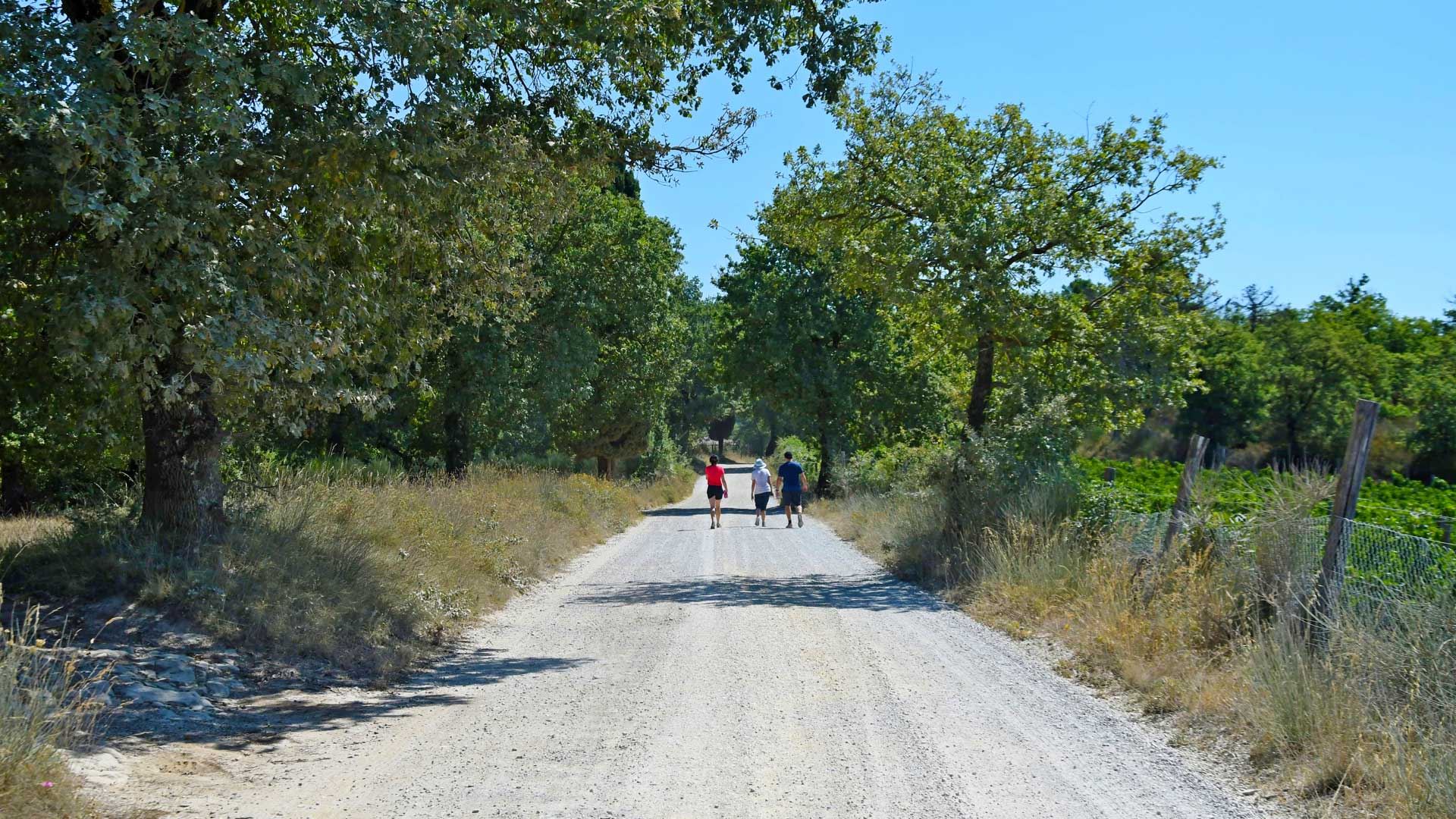A walk in the Chianti Classico heartland
Gaiole - Castello di Meleto – Barbischio
Time: 3 hours and 15 minutes
Distance: 12km
Grade: easy, with an ascent of 200m/650ft; on good tracks and trails and suitable in any season
Refreshments: bar/restaurants in Gaiole, Barbischio and Castagnoli (the latter called https://www.tripadvisor.co.uk/Restaurant_Review-g616196-d2205293-Reviews-Il_Celliere_a_Castagnoli-Gaiole_in_Chianti_Tuscany.html)
Note: Meleto Castle can be visited on a guided tour (groups only); ph: 0039 0577 749217 to enquire about the fee and opening times. www.castellomeleto.it
Put your best foot forward in the Chianti Classico heartland. This circular trail from Gaiole wanders through a landscape of vines, wild fruits and fig and cypress trees. It also passes by a church and a tower house both dating from the 10th century, as well as the castle at Meleto, fought for in the wars between Siena and Florence (groups can pre-arrange a guided tour). The medieval hamlet of Barbischio is also on the route, which winds its way through chestnut woods and follows a stream before returning to Gaiole.
This walk is set in the heart of Chianti and the Chianti Classico wine-growing area. The route has all the ingredients for a typical Chianti walk. It starts in a stone-paved piazza, passes a 10th-century church, a castle involved in the wars between Siena and Florence, and a medieval tower house. It is, of course, set among a myriad of vineyards patterning the hillsides not covered with trees. In autumn, with all the wild fruits around - blackberries, figs and grapes - the walk is a feast both metaphorically and literally.
Start the walk in the centre of Gaiole, by the sculpture. This street, Via Casablanca, is the main road to Siena (SS408). Follow this road towards Siena until you arrive at a junction (5min). Stay on the right-hand side of the road, cross Via Galilei, and look straight ahead for your next route - a track that starts at this junction and winds uphill. It passes a renovated farmhouse and leads into the piazza of the 10th-century parish church of Spaltenna (15min). The surrounding buildings are now a hotel, so are very well kept. Take the track at the right of the piazza, skirting the hotel complex, with the hotel grounds and gardens on the left and a vineyard on the right. Veer to the left at the pond and continue to where the main track turns left: go straight ahead here on an old grassy track into the trees, leaving the CAI 16 behind. Soon you join a second track, where yellow markers indicate the line of an underground pipe. Emerging from the trees, you will see a large derelict farm on your left. Head towards it, skirting the edge of vineyards (25min).
The farm is San Pierone and, if it is still uninhabited, do look around the outside. You will see the outdoor oven, the wells, and a chapel. It looks as if the people left only recently. Head left downhill from the farm, towards a strange, isolated villa with a tabernacle at the crossroads. (The last time we did this walk, land was being cleared for new vineyards, and the stone tabernacle had been moved - temporarily I hope!) Continue with the villa’s garden wall on your left, the cantina for ’Geografico’ wine on your right, and the castle of Meleto on the hillside ahead. What could be more Chianti? The track leads you into the valley, skirting to the right of a farmhouse halfway down (40min).
Meeting the Siena road once more, go left and immediately right over the bridge (signposted for Meleto). Five minutes up this minor road, you pass a derelict building on the right: it was the limekiln for plaster for the walls inside Meleto castle. Plans are now afoot for it to be turned into a restaurant. Turn right up the straight, cypress-lined drive leading into the courtyard of the Castello di Meleto (55min).
After a tour and perhaps a wine tasting, follow the CAI 56 along the chapel wall. This track has wonderful views over the undulating Chianti country with its woodlands and vineyards. The track leads past a farm and up to another, large rectangular farm on the ridge. The track dips and then rises to the road again, by a bus stop (1h15min). Cross the road and follow a track towards another farm. The track divides below the farm: keep left and continue, veering right, back to the road. Turn left on the road and stroll up to Castagnoli (1h45min), with its huge castle-like building by the roadside. Below the wall you can see some of the stainless steelstainless-steelipment.
Walk straight on, past the church and restaurant. Just before the next house on the left (where there is a wooden cross on the opposite side of the road; 1h50min), turn left down a track, the CAI 54A. Cross the stream by the ford, then walk up to a pretty holiday home (2h05min). Beyond the next house, the track becomes a sandy trail through chestnut woods and scrub. Follow this marked route, ignoring two trails off to the right, until you meet a wide track. Turn left here; then, at a wide junction with a tabernacle (2h35min), take the right-hand track (CAI 54).
Coming into the medieval hamlet of Barbischio, you meet a Y-junction (2h45min). The road to the right goes up to the 10th-century tower house; take the road to the left, descending past the Papavero Restaurant. The road ends by ’Pietro’, a house covered with old farming artefacts. But a lovely soft woodland trail continues to the right and takes you down to the stream. Turn left, walk parallel with the stream, and you will come to a farmyard, which was once the old village mill (3h). Continue down to the road and turn right over the bridge. At the T-junction, keep left for Gaiole.














